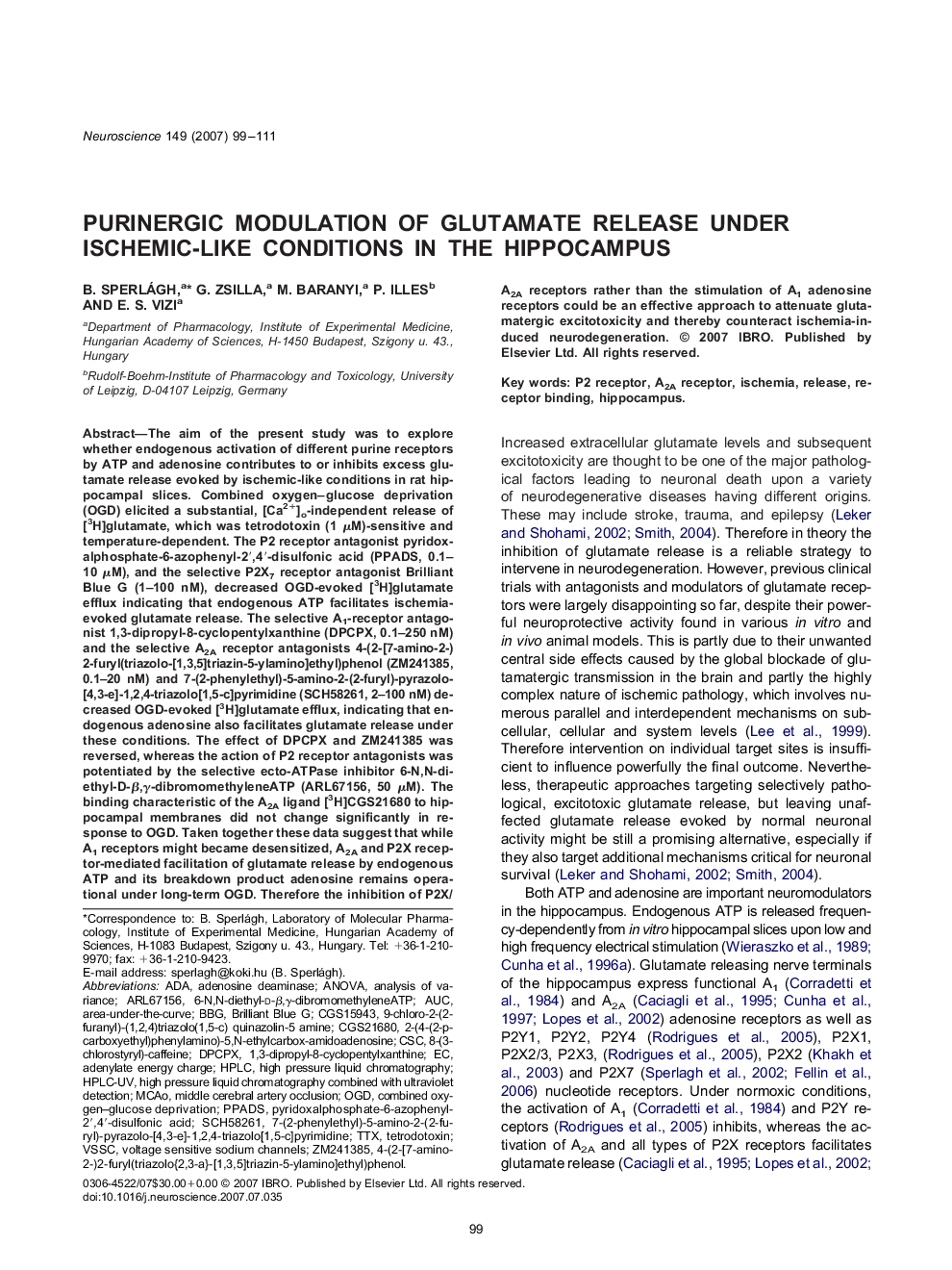| کد مقاله | کد نشریه | سال انتشار | مقاله انگلیسی | نسخه تمام متن |
|---|---|---|---|---|
| 4341201 | 1295827 | 2007 | 13 صفحه PDF | دانلود رایگان |

The aim of the present study was to explore whether endogenous activation of different purine receptors by ATP and adenosine contributes to or inhibits excess glutamate release evoked by ischemic-like conditions in rat hippocampal slices. Combined oxygen–glucose deprivation (OGD) elicited a substantial, [Ca2+]o-independent release of [3H]glutamate, which was tetrodotoxin (1 μM)-sensitive and temperature-dependent. The P2 receptor antagonist pyridoxalphosphate-6-azophenyl-2′,4′-disulfonic acid (PPADS, 0.1–10 μM), and the selective P2X7 receptor antagonist Brilliant Blue G (1–100 nM), decreased OGD-evoked [3H]glutamate efflux indicating that endogenous ATP facilitates ischemia-evoked glutamate release. The selective A1-receptor antagonist 1,3-dipropyl-8-cyclopentylxanthine (DPCPX, 0.1–250 nM) and the selective A2A receptor antagonists 4-(2-[7-amino-2-)2-furyl(triazolo-[1,3,5]triazin-5-ylamino]ethyl)phenol (ZM241385, 0.1–20 nM) and 7-(2-phenylethyl)-5-amino-2-(2-furyl)-pyrazolo-[4,3-e]-1,2,4-triazolo[1,5-c]pyrimidine (SCH58261, 2–100 nM) decreased OGD-evoked [3H]glutamate efflux, indicating that endogenous adenosine also facilitates glutamate release under these conditions. The effect of DPCPX and ZM241385 was reversed, whereas the action of P2 receptor antagonists was potentiated by the selective ecto-ATPase inhibitor 6-N,N-diethyl-D-β,γ-dibromomethyleneATP (ARL67156, 50 μM). The binding characteristic of the A2A ligand [3H]CGS21680 to hippocampal membranes did not change significantly in response to OGD. Taken together these data suggest that while A1 receptors might became desensitized, A2A and P2X receptor-mediated facilitation of glutamate release by endogenous ATP and its breakdown product adenosine remains operational under long-term OGD. Therefore the inhibition of P2X/A2A receptors rather than the stimulation of A1 adenosine receptors could be an effective approach to attenuate glutamatergic excitotoxicity and thereby counteract ischemia-induced neurodegeneration.
Journal: Neuroscience - Volume 149, Issue 1, 12 October 2007, Pages 99–111